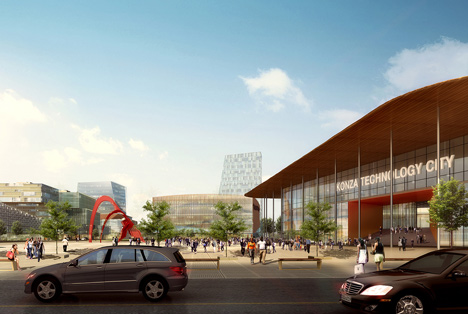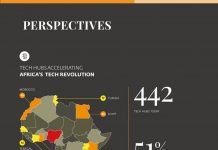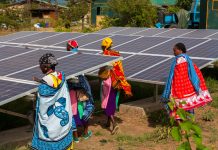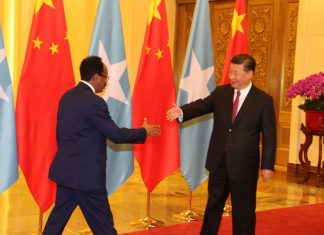The story of the economic rise of African countries over the last decade, with a continent-wide per capita income nearly identical to that of the rest of the world, continues to make headlines in leading publications worldwide. Not so well publicized, however, is the story of the increasing number of mega projects being undertaken as the continent becomes financially stronger.
“There has been a significant increase in basic infrastructure spending for the entire continent of Africa. From our Deloitte analysis, we have seen an annual increase in excess of 45 percent, totaling over $325 billion, being invested in critical areas of infrastructure development,” says Mark A. Smith, Ph.D., partner and head of Deloitte Infrastructure & Capital Projects East Africa, based in Nairobi, Kenya.
“Much of the development is being financed by new private financing whereby global financial institutions and private equity are seeing stable African country governments and favorable infrastructure laws spurring much needed basic development in roads, ports and alternative energy sources,” Smith told AfricaStrictlyBusiness.com in an exclusive email interview.
According to Deloitte’s 2014 African Construction Trends Report, most mega projects undertaken between 2013 and 2014 are in such critical sectors as transport, energy and power. Only projects valued at more than $50 million, and which broke ground by at least June 1, 2014, are listed in the report.
According to the report, the combined investment in transport and energy mega projects represents over 70 percent of all infrastructure investment in Africa. For selected regions like East Africa, investment in transport and energy represents more than 90 percent of the infrastructure spending.
“Energy, which is vital to support manufacturing growth, continues to be a key sector in the developing African infrastructure story. But investment and construction activity in transport has also come through strongly over the past year,” Smith says. “The transport sector has eclipsed energy as the key sector seeing construction activity on the continent in 2015 and revealing significant investment in rail and ports.”
Southern Africa, the region with the most mega projects, accounted for $144.89 billion in projects, or 44.5 percent of the total value of mega projects on the continent last year. West Africa followed with $74.84 billion (23 percent) in construction projects. Central Africa saw a 117 percent spike in projects, at a total value of $33.21 billion; North Africa had $9.12 billion worth of projects; and East Africa, where there was a 10 percent decline in mega projects, accounted for $60.67 billion in construction in 2014.
Much has been made of statistics showing Africa as home to six of the ten fastest growing economies globally over the last five years, and forecasts that seven of the ten highest growth economies in the coming five years will be in Africa. While some analysts question the real value of that data in light of the stubborn incidence of poverty, the continent clearly is a bustling hive of economic activity. The challenge is to maintain, or improve, the momentum of that bustle.
“The key to driving economic growth is sound investment in infrastructure development. If managed properly through sound governmental policies and efficient decision-making, mega infrastructure projects are bringing much needed employment to the local economies, as well as new technology, especially in the area of alternative energy use such as wind power and geothermal projects,” Smith says.
There were 143 public sector-led projects, with a further 88 private sector initiatives and 26 classified as public private partnerships (PPPs), according to the Deloitte report. Energy and power accounted for 37 percent of the number of mega projects undertaken in Africa in 2014, followed by transportation (34 percent), mining (9 percent), real estate (6 percent), water (5 percent), oil & gas (4 percent), mixed-use facilities (2 percent), and health care (1 percent). These projects are expected to help their respective economies, but that will not happen if governments fail to follow through on regional plans, Smith says.
“National governments must continue with the execution of their inter-regional development plans as well as transparency of spending. The global financial investment vehicles, whether it be public or private financing, are closely watching how the various African regions are performing according to their ambitious plans. The lack or delay in the execution of large infrastructure projects could thwart future investments into key growing economies within Africa,” notes Smith.
Below are ten mega projects scheduled or currently under construction.
Riding the Rails. A 3,000-kilometer West African rail network to connect Benin, Burkina Faso, Niger, Ivory Coast, Ghana, Nigeria, and Togo.
Power Dam. Grand Ethiopian Renaissance Dam is under construction at the Benishangul-Gumuz region of Ethiopia, on the Blue Nile River. Owned by Ethiopian Electric Power Corporation and being paid for by the people and the government of Ethiopia, the project began April 2011 at a cost of $4.7 billion. Completion is expected by July 2017.
Connecting Rwanda. The Mombasa-Kigali Railway Project being built by China Communication and Construction Co. will run from the Port of Malaba in eastern Uganda; to Kampala, the Ugandan capital; and on to Kigali in Rwanda – a distance of 2,940 km. It is expected to be completed by March 2018 at an estimated cost of $1.35 billion.
Africa’s Silicon Valley. Kenya’s Konza Techno City (masterplan pictured above) is being built over 5,000 acres just south of Nairobi. One of Africa’s longest projects, it is expected to take nearly 20 years to be completed. When completed it will house software development businesses, data centers, disaster recovery centers, call centers, and light assembly manufacturing industries.
Linking nations. An Ethiopia-to-Djibouti Rail Link covering 756 km will cost $2 billion. Funding is coming from China’s Export & Import Bank.
Lord of the Rings, Africa style. The Al Noor Tower in Casablanca, Morocco’s largest city, may turn out to be the tallest in Africa. Dubbed the “Lord of the Rings” tower after the towers in the 2002 high-fantasy film with the same name, construction on Al Noor is planned for later this year. The 114-story building will feature offices, apartments, a seven-star luxury hotel, an art gallery, and upscale shops. Quoting Emporis, the international building directory, CNN reports that, “at 540 meters tall (designed specifically in recognition of Africa’s 54 countries) Al Noor would currently rank as the fifth tallest building in the world, in between Taipei 101 (501 meters) and One World Trade Center (541 meters), according to data from the Emporis building directory.”
Big Apple Africa? South Africa’s construction of a new mega city in Modderfontein, east of Johannesburg is an eco-friendly and low-carbon urban district that will take 15 years to complete. Dubbed “the Manhattan of Africa,” it is being built by both South African and Chinese interests. Its construction is expected to be an economic boon to South Africa, with an estimated 150, 000 jobs created over the next 20 years.
Modderfontein City will feature nine zones, including a central business district, international conference and exhibition center, an entertainment center, silver industry and retirement industry, international residential community, education and training center, sports center, trade and logistic park and light industry park. There will be churches, a library, a hospital and medical facilities, schools and a university, hotels and low-cost housing.
Suez 2.0. The government of Egypt is banking on the expansion of the Suez Canal to revive the economy by boosting traffic. The expansion of the canal, which was built in 1869, will cost about $8.5 billion.
African Dream? The hydroelectric Inga Dams on the Congo River in the Democratic Republic of Congo are being hailed as a “dream for Africa,” with their potential to electrify the entire continent at low cost. There are six dams within the Grand Inga Dam scheme. The World Bank approved a $73 million grant in March 2014 for the 4,800-megawatt Inga 3 Dam, the first of the six-phase scheme, while the African Development Bank has put in $50 million. Groundbreaking was initially scheduled for October 2015, but may be pushed postponed. If all goes as planned, it could become the world’s largest hydroelectric dam.
Nigeria’s Transit Upgrade. The Lagos Metro Blue Line, at a cost of $1.2 billion, will connect Nigeria’s largest city, running between Marina and Okokomaiko with 13 station stops. Sponsored and funded entirely by the Lagos State Government, the urban rail project is being developed by Lagos Metropolitan Area Transport Authority on behalf of the state government. Construction is slated to begin later this year. China Civil Engineering Construction Co. is the appointed contractor.













